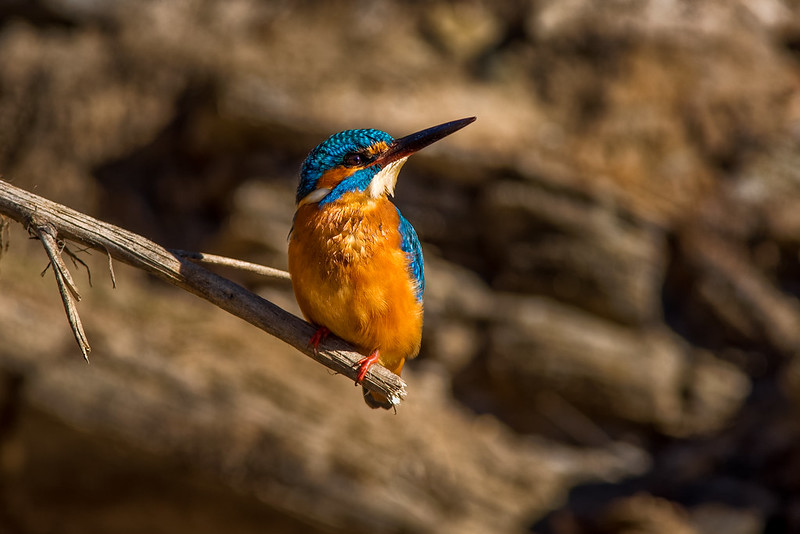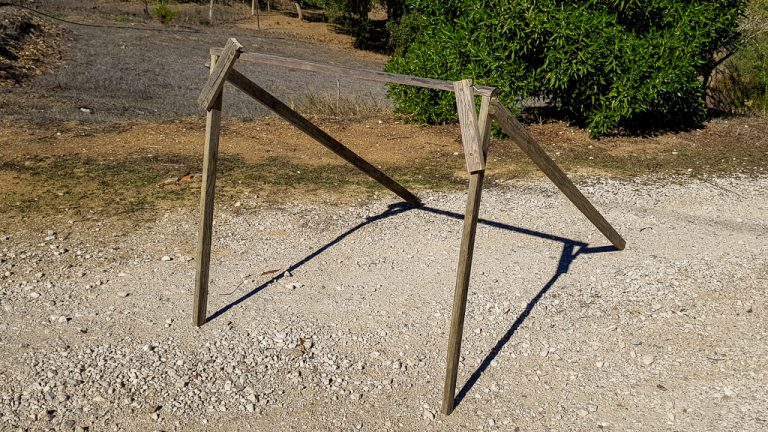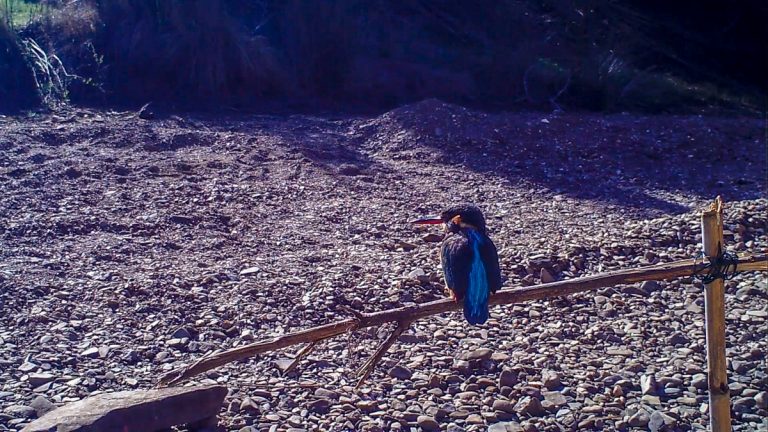This morning, I was up at sunrise, drank a coffee, took the dog for a walk, had breakfast and then headed down to the Kingfisher Hide I built yesterday. Portuguese for Kingfisher is Guarda-rios, but translates to River Ranger/Guard.
I approached slowly and quietly and the perch was not empty, the Kingfisher was already there. I stopped, it stopped, we stared at each other for what felt like an hour but was probably more like 5 seconds before it flew away. I made sure that it had cleared the area totally before approaching the hide. I didn’t want to scare it away for good.
I squeezed into the hide and set myself up for a long wait. The long wait wasn’t needed, within about 5 minutes the Kingfisher was back but it looked a little confused, it knew something had changed and it flew to the next river pool about 25 metres away. I sat and watched it dive into the water catching small fish and eating them. At this moment, I really couldn’t care if it didn’t come to the perch, I was happy enough just sitting there watching it. However, soon enough it came back to the perch and didn’t seem bothered of my presence, although I was well hidden. It was a very still morning, not even a breeze so my next concern was the noise of the shutter, would it scare it. The D810 was in “quiet” mode which tries to limit the noise of the shutter, I fired off a shot, it didn’t disturb the bird at all.
I spent the next hour sat there watching it dive, sometimes successful, sometimes not. It did have a good feed. I waited until breakfast was over and it flew away before leaving. I was using my 300mm f/2.8 lens fitted with a 1.7 teleconverter as I still await the return of my 500mm f/4 from repair. I’m pretty happy with the quality of the shots considering, but looking forward to the return of my 500mm f/4. The only problem I see is getting into the hide with the size of the 500mm f/4. My next goal is to capture a usable shot of the Kingfisher with a fish in its mouth, I did get some, but not good enough.
At first, I thought this was a Male Kingfisher due to the lack of orange lower beak. However, on closer look, I think this is a juvenile Female as there is a little colour appearing underneath.
{Click image(s) to view on Flickr - opens in new tab}

